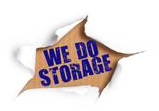business relocation
Managing and Safeguarding Business Resources; An In-depth Manual, for Companies Going Through Changes
In the evolving world of business transitions like company relocations, expansions, mergers or downsizing are events. Amidst these shifts one crucial aspect that demands organization and implementation is the handling and safekeeping of business resources. Whether its equipment and stock or paperwork and furnishings effectively overseeing business resources during times of change is vital for sustaining efficiency reducing disruptions and ensuring business operations. This post delves into the obstacles and factors to consider when managing and safeguarding business resources providing insights and practical advice for companies navigating transitions.
Assessing Resource Inventory;
Prior, to embarking on any transition it’s imperative for businesses to conduct an evaluation of their resource inventory. This involves identifying all nonphysical assets owned by the company like equipment, machinery, furnishings, technology, stock items, intellectual property rights and critical documents. By gaining a picture of the resources requiring relocation or storage companies can formulate a plan tailored to their specific needs.
Creating a Transition Strategy;
Once a company has evaluated its asset inventory it is crucial to create a transition plan that details the logistics, timelines and resources needed for relocating and storing assets. This plan should outline milestones, assign responsibilities. Include backup strategies to tackle unexpected obstacles that may crop up during the transition. By mapping out a path, for the transition process companies can enhance efficiency reduce disruptions and ensure a shift from start to finish.
Priority on Safeguarding Assets;
Ensuring the protection of business assets during transitions is vital for preserving investments and upholding effectiveness. When moving assets companies should proactively implement measures to guarantee their handling, transportation and storage. This might entail utilizing equipment, packaging materials and handling protocols to prevent any damage or misplacement during transit. Moreover considering investment in insurance coverage can help mitigate risks and liabilities linked with asset movement and storage.
Securing Temporary Storage Facilities;
During stages companies may find the need for temporary storage solutions to accommodate assets throughout the transitioning phase. Whether necessitated by office refurbishments, relocations or downsizing initiatives; having access to dependable storage facilities is crucial, for safeguarding assets and sustaining business activities.
Businesses should consider exploring options, for storage like commercial storage units, warehouse facilities on or off site storage providers that can provide the necessary space, security measures and easy access tailored to their specific requirements.
Implementing Systems for Tracking Assets;
To effectively oversee and manage assets during transitions businesses should think about incorporating asset-tracking systems or software solutions. These systems allow businesses to accurately document, monitor and oversee asset movements in time offering insights into where assets are relocated and their statuses and usage histories. By utilizing asset tracking technologies businesses can simplify inventory management processes enhance asset protection measures and optimize resource allocation during periods.
Recording and Organizing Assets;
Maintaining documentation and organization of assets is crucial for ensuring accountability and compliance throughout transitions. Businesses ought to develop inventories, lists of assets and records that include details, like asset descriptions, serial numbers, values, and ownership information.
Moreover, establishing filing systems and labeling practices for organizing and digital assets will make it easier to locate items when needed.
Collaborating with Professionals;
Navigating transitions can present challenges particularly when it involves relocating and storing business assets. Businesses can gain advantages by teaming up with experts, like relocation specialists, logistics providers and storage professionals. These professionals bring knowledge, resources and assistance to the table throughout the transition process. They can help with asset planning, transportation, storage and logistics to guide businesses through transitions smoothly and confidently.
In summary, managing the movement and storage of business assets during times of change necessitates planning, attention to detail and strategic implementation. By evaluating asset inventory creating a transition blueprint prioritizing asset safeguarding securing storage spaces implementing asset monitoring systems organizing assets systematically and collaborating with professionals; businesses can effectively steer asset transitions and maintain operational continuity during periods of transformation. Through planning and execution strategies in place; businesses can confidently navigate transitions while minimizing disruptions and positioning themselves for success, in a marketplace.





